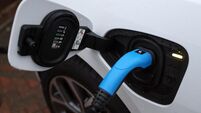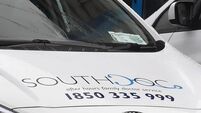Slow take-up of UK debt relief orders
Take-up of a new British government alternative to bankruptcy has been slower than expected, figures showed today.
Only 1,978 people in England and Wales took out a Debt Relief Order (DRO) during the three months to the end of June, well down on predictions that up to three times this number of orders would be arranged during the period.
DRO, which became available for the first time on April 6, enable people on low incomes with relatively low levels of debt and few assets to get back on their feet within a year.
They cost £90 (€105.38) to set up and can be taken out by people who owe less than £15,000 (€17,563), providing they have assets worth less than £300 (€351.27), rising to £1,000 (€1,171) if they have a car, and they do not have more than £50 (€58.54) a month spare to meet debt repayments after covering all of their essential living costs.
But the orders have taken longer than expected to process, leading to a backlog building up in the system.
At the same time, a decision to include a pension fund as an asset when assessing eligibility for the orders has meant many people do not qualify for them, and will have to declare themselves bankrupt instead.
Mark Sands, director of personal insolvency at Tenon Recovery, said: "DROs are at nothing like the levels expected.
"These figures could still be skewed by a possible backlog in the processing of DROs which may have been underestimated by intermediaries.
"The extent of any backlog will become evident in the following months - early indications based on DROs seen since the end of the last quarter show they have already increased by 25% over the rates reported today."
John Bangham, director of personal insolvency at KPMG, said: "Whilst the numbers of DROs are lower than originally forecast, the indications are that debtors are turning to this procedure in ever increasing numbers."
Malcolm Hurlston, chairman of the Consumer Credit Counselling Service, which is one of the so-called competent authorities that can handle applications for a DRO, expects the orders to outstrip traditional bankruptcy by up to two to one in time.
But despite recommending DROs to 2,498 people during the second quarter, with 1,455 people going ahead with the recommendation, only 173 of the orders had been set up through the group by the end of June, due to the length of time taken to process them.
Graham Horne, deputy chief executive of the Insolvency Service, said: "It is still early days but the introduction of Debt Relief Orders is helping a number of people facing real financial hardship find relief from their debts.
"These are people who were previously unable to afford access to insolvency solutions, so the DRO regime has been designed to ensure that the entry cost is affordable.
"However, strict entry criteria and a robust enforcement regime have ensured that DROs are not just an easy way of ditching your debts."















